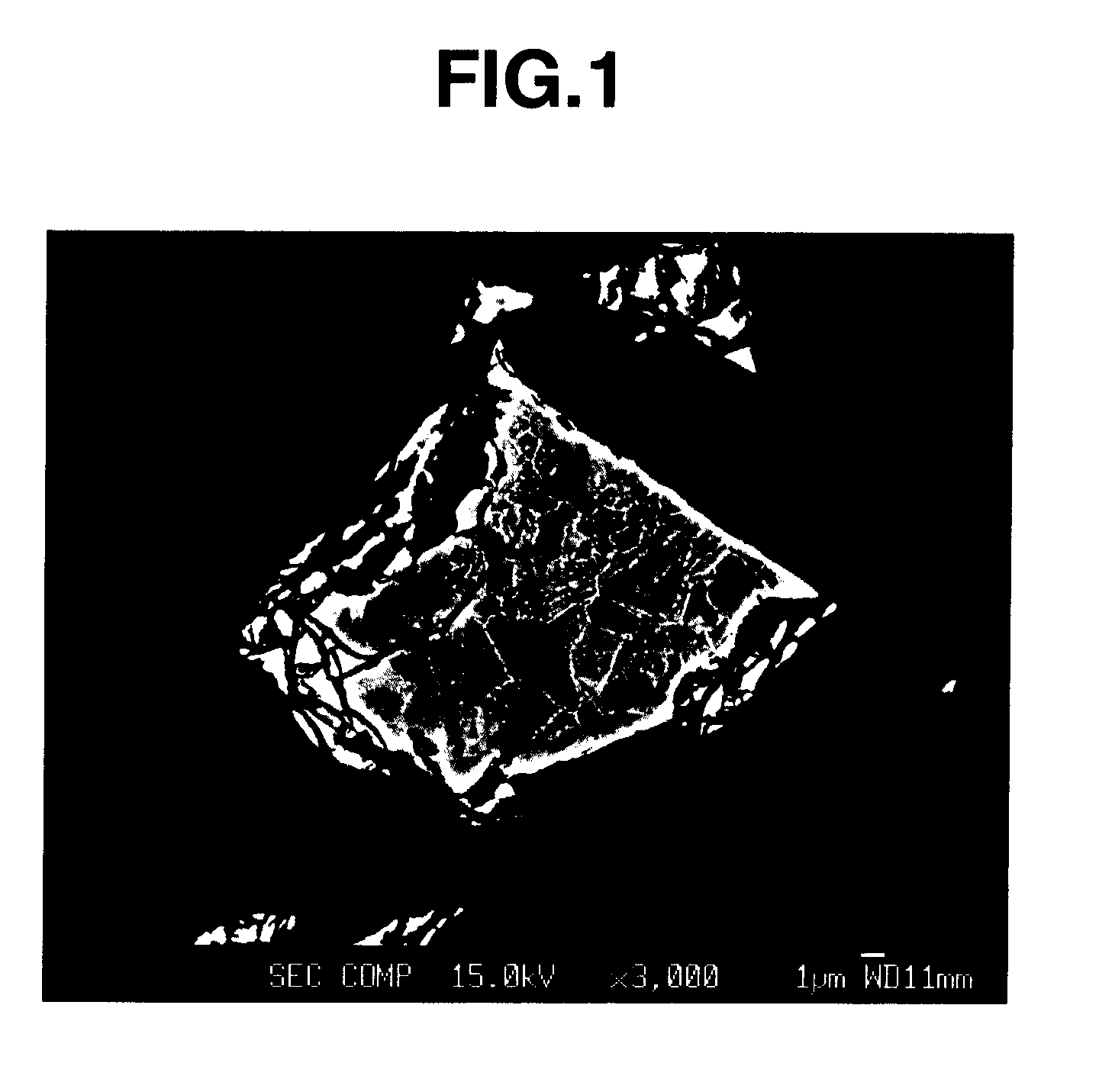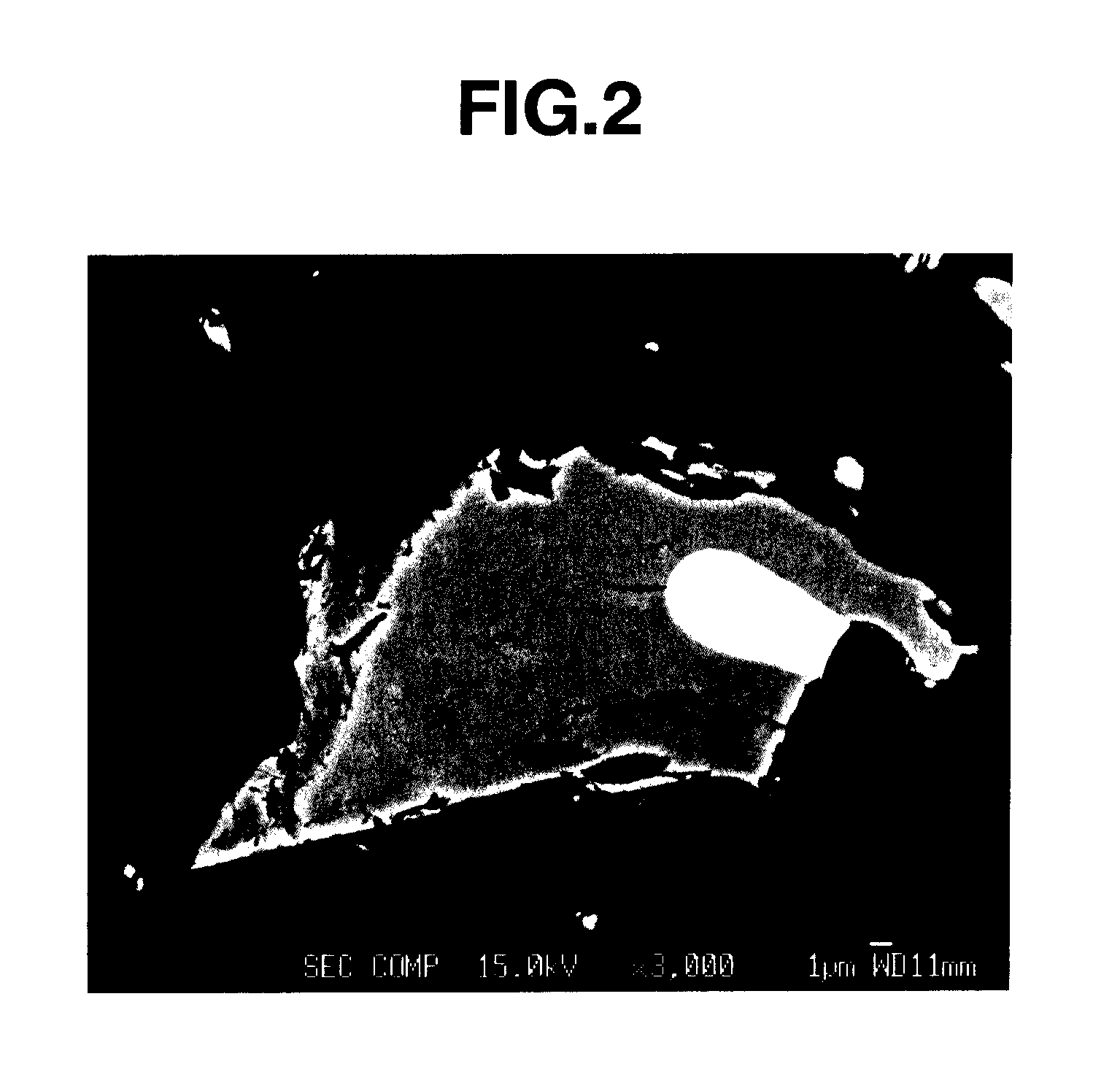Rare earth magnet and its preparation
a rare earth magnet and rare earth technology, applied in the field of rare earth magnet preparation, can solve the problems of unavoidable loss of remanence (or residual magnetic flux density), unsatisfactory, and increased use of tb and dy, and achieves the effects of reducing the risk of handling, and reducing the risk of oxidation
- Summary
- Abstract
- Description
- Claims
- Application Information
AI Technical Summary
Benefits of technology
Problems solved by technology
Method used
Image
Examples
example 2
[0052]An alloy was prepared by using Dy and Al metals having a purity of at least 99% by weight as raw materials and arc melting them so that the alloy might have a composition consisting of, in atom percent, 80% of Dy and the balance of Al. It was processed as in Example 1 to form a quenched alloy ribbon, which was finely pulverized on a planetary ball mill for 3 hours. The quenched alloy powder had a mass median diameter of 26.2 μm. On X-ray diffraction analysis, it was identified to have an amorphous structure having no specific crystal peaks. As in Example 1, the mother sintered body was coated with the powder, followed by diffusion treatment and aging treatment. The average powder coating weight, magnetic properties of the resultant magnet, and a change of oxygen concentration in the diffusion alloy powder are also shown in Table 1.
TABLE 1Change ΔO inoxygenconcentrationAverageof powderpowderbefore and aftercoatingdeionized waterweightJHcjimmersion(μg / mm)(T)(MA / m)(wt %)Example 1...
PUM
| Property | Measurement | Unit |
|---|---|---|
| thickness | aaaaa | aaaaa |
| size | aaaaa | aaaaa |
| particle size | aaaaa | aaaaa |
Abstract
Description
Claims
Application Information
 Login to View More
Login to View More - R&D
- Intellectual Property
- Life Sciences
- Materials
- Tech Scout
- Unparalleled Data Quality
- Higher Quality Content
- 60% Fewer Hallucinations
Browse by: Latest US Patents, China's latest patents, Technical Efficacy Thesaurus, Application Domain, Technology Topic, Popular Technical Reports.
© 2025 PatSnap. All rights reserved.Legal|Privacy policy|Modern Slavery Act Transparency Statement|Sitemap|About US| Contact US: help@patsnap.com


